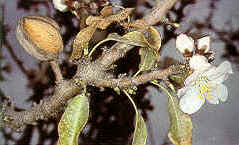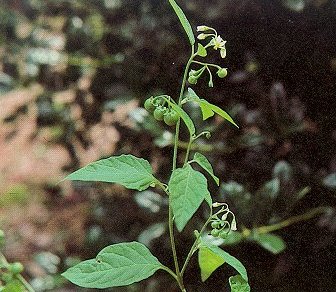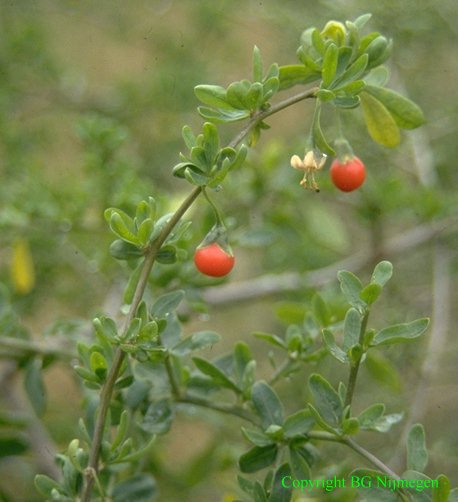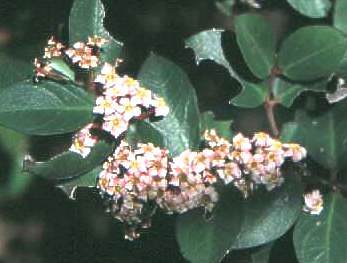
|
Bitter almond (Prunus dulcis). The kernels are poisonous.
Note: bitter almonds (with white flowers, pink at the base)
are not as common as the ordinary edible form of Prunus
dulcis known as almond or sweet almond (all pink flowers).

Back to Top
|

|
Black nightshade (Solanum nigrum). This plant is only
moderately toxic and the ripe black berries, which are
similar to black currants, are scarcely poisonous at all.
Note: this is the plant most people mistakenly call deadly
nightshade. The true deadly nightshade (Atropa bella-donna)
can live up to its name, but is fortunately very rare and
only recorded in Christchurch. True deadly nightshade has a
relatively large bell-shaped, brownish-purple flower, as
opposed to the white star-like flowers of black nightshade,
and its glossy black berries can be twice the size of those
of black nightshade.

Back to Top
|

|
Boxthorn (Lycium ferocissimum). The orange-red berries
are probably poisonous. Note that the green spines on
boxthorn are often not noticed until the bushes are touched.
Mainly occurs wild along the coast, and in some gardens.

Back to Top
|

|
Broom (Cytisus scoparius). The seeds are poisonous,
especially if chewed and crushed before swallowing. The
poisons are similar to those in its relation, the laburnum,
but broom seems to be less harmful.

Back to Top
|

|
Bushman's poison (Acokanthera oppositifolia). Although
not a common species, this South African shrub is included
because it is one of the most poisonous plants in New
Zealand. All parts are toxic, especially the shoots and
roots. The fruit is like a small blue-black plum. It belongs
in the oleander family of which most members are
dangerous.

Back to Top
|
|
|
|
|
|
|
|
|
|
|
|
|
|
|
|